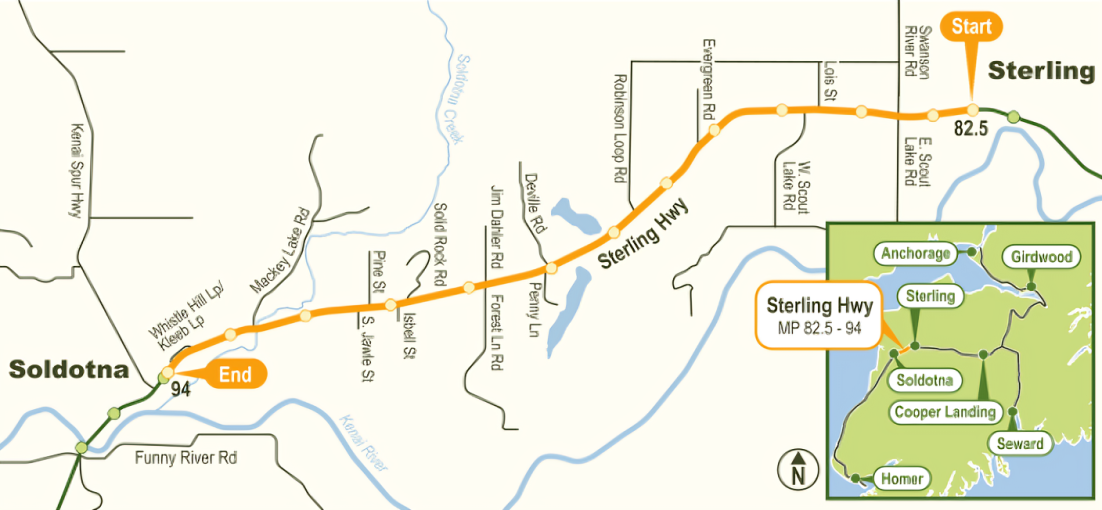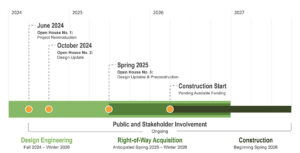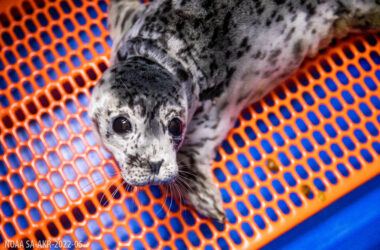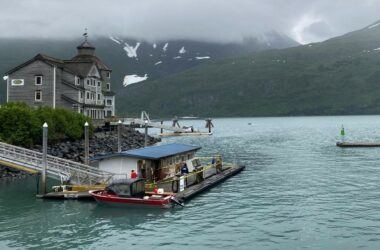The Sterling Safety Corridor Improvements project will start widening Sterling Hwy in 2026. The project aims to address known safety concerns and provide travelers with a safe and reliable roadway that supports the efficient year-round movement of goods, services, and people while accommodating the seasonal increase of tourist and recreational traffic.
The State of Alaska DOT&PF has been considering widening the Sterling Highway to four lanes since the mid-1980s and has already purchased much of the right-of-way (ROW) anticipated to be needed for the project. The existing ROW width throughout the project corridor varies from 180 feet to over 200 feet, enough to accommodate highway expansion in nearly all locations.
In the 2000s, they launched the design project that evaluated alternatives and prepared the environmental document. That phase of the project finished a couple of years ago, and now the DOT&PF is moving into a final design.
Julia Hanson, Design Project Manager, said, “More recently, specifically in the 2000s, and since then, we’ve seen a huge number of crashes with the crash rates just seem to keep going up and up.”
In 2009, it was designated as the safety corridor because of the number of fatal and severe serious injury crashes occurring. Now, the DOT is at the stage where they can start building.
Hanson says they will probably start with some preliminary work in 2026.

The Sterling Safety Corridor Improvements project will reconstruct the Sterling Highway from milepost 82.5 near Moose River to milepost 94 near Fred Meyer in Soldotna. Current traffic and crash data were analyzed to determine the number and configuration of travel and turn lanes to best meet the various needs along the corridor.
Hanson emphasized that the reevaluation was occurring because they still wanted four lanes; however, they received pushback against the divided highway concept.
“We want to look more closely at how can we still provide access and safety. How are there ways that we can do both? So we’ve come up with some pretty interesting concepts that I don’t think have been used in Alaska yet that we think will allow people to access their property without having to go out of their way too far.”
Instead of U-turns, folks will be able to make two left turns to turn around while still allowing direct left turns onto the major connecting roads. “It’s details like that that we’re working out,” Hanson says.
Additional improvements may also include a separate bike/pedestrian pathway along the north side of the highway and highway lighting.
Additional ROW easements and/or acquisition may be required at some locations to accommodate intersection and access improvements, such as realignment of intersecting roads, new frontage roads, new side streets, and reconnecting driveways, but these needs (if any) are not identified at this point.

The project is occurring in phases, and Hanson says its intended completion should be in 2028, but it might spill into 2029.
The first phase of construction, which consists of clearing work, will begin next year. They’ll work on the main line at the Sterling end of the project.
In 2027, they’ll begin construction on the half that is closer to Soldotna.
DOT&PF is expected to have a better idea of ROW needs in spring 2025, at which the project team will contact potentially impacted property owners.
Additional information can be found on the DOT&PF Real Estate/Right-of-Way page.






